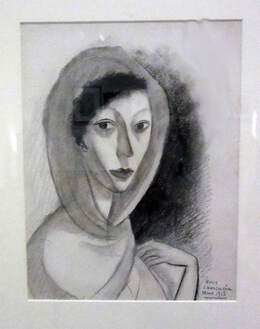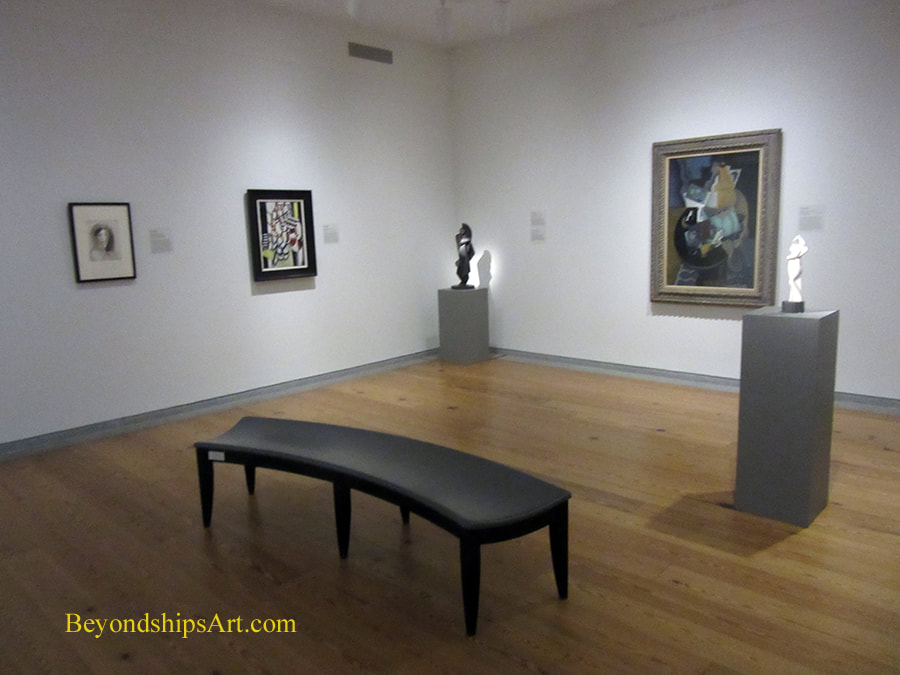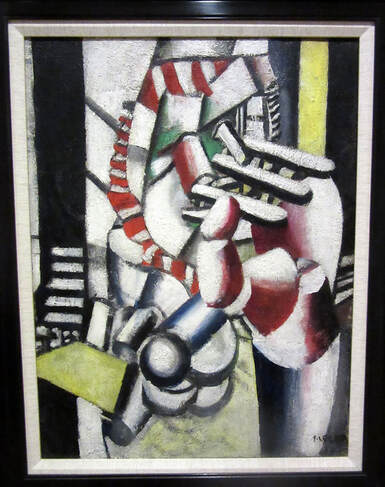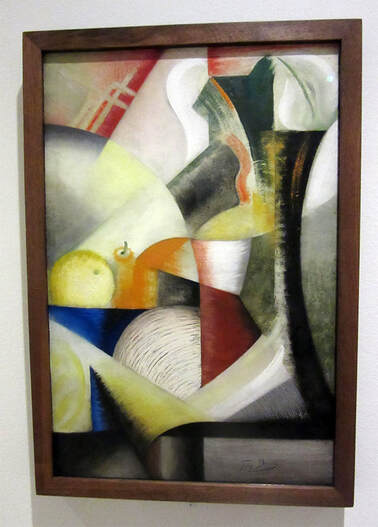ART REVIEW: "Expansion of Cubism: 1911-1920" Laurencin, "Head of a Woman" Laurencin, "Head of a Woman"
“The Expansion of Cubism, 1911 -1920” at the Portland Museum of Art presented works by a number of Cubist artists including Fernand Léger, Marie Laurencin, Jean Metzinger, and Max Weber. The exhibition included paintings, sculptures, and works on paper from the museum's own collection and on loan from other collections.
Cubism was a revolutionary movement in modern art at the beginning of the 20th century. Artists were interested in depicting reality in a new way, fragmenting subjects and viewing them from different points of view in space and/or time. They felt the traditional ways of depicting reality, using tonality and linear perspective, was visual trickery. Furthermore, the fragmented images acted as a metaphor for the fractured society that was about to erupt into the First World War. As almost any art history book will tell you, Cubism was invented by Pablo Picasso and Georges Braque in France. Both were very influenced by the late work of Paul Cezzane. Juan Gris and Marcel Duchamp also made contributions to the movement. However, as this exhibition demonstrated, there were others. Jean Metzinger along with Albert Gleizes wrote the first verbalized the theories underlying Cubism in Du Cubisme (1912). In addition to being a therorist, Metzinger was also a painter whose works moved further and further toward abstraction as time went on. Prior to World War I, Fernand Legar's work was increasingly abstract. Influenced by a remark made by Cezzane, he sought to illustrate nature by means of the cyliner, the spehere and the cone. His images were composed of geoetric forms. However, his experience in the French Army during the war caused him to radically alter course and include more figurative images in his work. Cubism was not an exclsusively male preserve. Marie Laurencin used Cubist principles in connection with her slightly abstracted figurative art. In “Still Life with Fruit,” Marthe Donas applied Cubist principles to create a very abstract version of a traditional subject. This exhibition showed how far others developed Cubism beyond its original concept. Artists applied the Cubist principles to a wide range of subjects and combined these principles with their own ideas. Whereas Braque and Picasso based their work on the visual experience, by the end of the Cubist period, artists no longer felt tied to reality and the door was open to pure abstraction based on imagination. |
Above: Fernad Legar, "The Wounded"
Marthe Donas "Still Life With Fruit".
|
Art review - Portland Museum of Art - Expansion of Cubism 1911-1920


